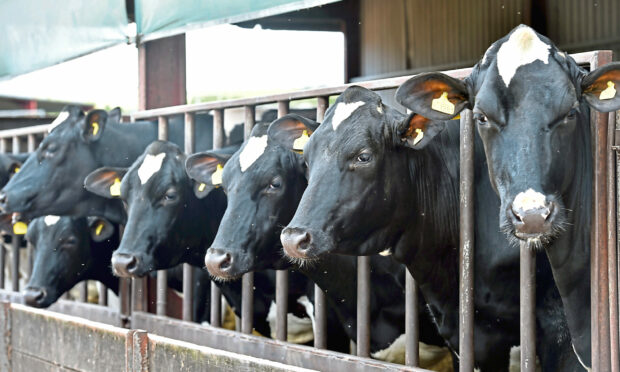Dairy farm profits in the UK doubled in the milk year to 2021-22 and are set to continue improving this year – although soaring input costs remain a concern to all producers.
Farm accountant Old Mill has unveiled its annual milk cost of production report at the Dairy Show today.
It shows that average comparable farm profits among its clients increased to £371/cow in the year to March 31 2022, driven by a combination of slightly firmer milk prices and lower production costs.
Milk income in 2021-22 increased by £80/cow, year-on-year, with modest price increases offset by lower yields, driven by a desire to reduce production costs.
Dan Heal, rural accountant at Old Mill, said: “Good forage-growing conditions meant a plentiful supply of high-quality forage, leading to lower-concentrate feed rates.
“The grazing season lasted well into the autumn, shortening the winter housing period.
“As a result, variable costs related to labour, bedding, power and machinery all fell.”
Even so, there remained a marked difference between the top and bottom 10% of producers, with the gap widening by £137 to £1,234/cow.
‘Inflation has hit the dairy sector hard’
Of this, £541 related to income; although top 10% yields were 1,334 litres/cow lower, income was higher. This shows that meeting buyer requirements reaps rewards, as does reducing concentrate usage when marginal litres are uneconomic, explained Mr Heal.
Production costs were £693/cow lower among the top 10%, mainly attributed to feed, labour, power and machinery.
“There is a high focus on efficiency for the top 10% of herds. In contrast, more work is being done in a less efficient manner among the bottom 10%, which is not generating a return, explained Mr Heal.
The @BathandWest #DairyShow returns today, with the @NFUsouthwest warning 'the cost of feed, fertiliser and fuel is one of the biggest challenges currently facing the industry – along with the after effects of the hot summer'
More here: https://t.co/lCvHhmoIzz
— Greatest Hits Radio South West (@GHRSouthWest) October 5, 2022
However, much of this could be attributed to less efficient setups, likely requiring investment to change.
Although the top 10% of herds were larger, at 287 cows versus 188 cows, there were a variety of systems and calving patterns in both groups, showing that efficiency relies on the farmer not the system, added Mr Heal.
Feed costs predicted to rise
Last year, milk prices averaged 33.8p/litre, most fertiliser was bought at sub £300/t and electricity contracts were in the 20p/unit range.
“Inflation has hit the dairy sector hard over the last six months, especially as milk supply is finely balanced,” said Mr Heal.
These rising costs and strong cull cow prices have led to more cows exiting the herd; the average herd size fell from 269 in 2020-21 to 250 last year and a forecast 235 in 2022-23.
Average feed costs are predicted to increase by £46/cow as prices rise and concentrates are fed to replace forage shortfalls.
“Cost increases are steadily coming through as fixed contracts for energy, feed and fertiliser come to an end, but the full effect will not be seen until the 2023-24 year.
“Combined with higher fertiliser prices, the overall cost of production is set to jump by £259/cow to £2,559/cow this year,” he added.
However, milk income is set to increase by £791/cow to £3,102 due to higher milk prices, despite a forecast drop in yield to 6,600 litres as the summer drought impacted both milk and forage production.
Non-milk income is expected to fall marginally to £350/cow as calf prices ease, leaving a comparable farm profit of £893/cow.
According to Annabel Hole, rural administrator at the Farm Consultancy Group, producers should prepare for higher tax bills given the larger profits made, and should beware of rising interest rates.
Mr Heal concluded: “Challenge creates opportunity – there is the potential for good profits to be made, but the focus needs to be on efficiency to maximise these and secure the business for the future.”

Conversation